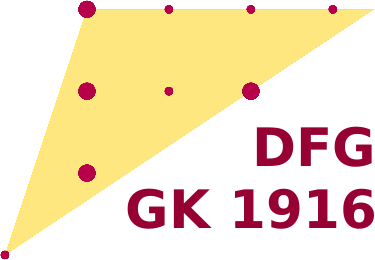Hauptinhalt
Topinformationen

Descent in Motivic Triangulated Categories
There will be a minicourse by Denis-Charles Cisinski from Toulouse.
Schedule:
| Thursday 22nd, | |
| 10:00-11:30: | Descent in Motivic Triangulated Categories I by Cisinski |
| 11:40-12:30: | Tutorial/Discussion session |
| 12:30-14:00: | Lunch break |
| 14:00-15:30: | Descent in Motivic Triangulated Categories II by Cisinski |
| Evening: | Dinner |
| Friday 23rd, | |
| 10:00-11:00: | Tutorial/Discussion Session |
| 11:10-12:40: | Descent in Motivic Triangulated Categories III by Cisinski |
| 12:40-13:45: | Lunch break |
| 13:45-15:15 | Tutorial/Discussion Session |
All lectures and tutorials will take place in room 69/118. Please register by email to mgausman@uos.de.
Abstract: For all three lectures: we will recall various constructions of triangulated categories of motivic sheaves, after Morel and Voevodsky. We will see how Lurie's sheaves of higher groupoids allows to work with fairly general schemes (in particular, without any noetherian assumptions). We will also see why the smooth Nisnevich site plays a central role, by examining the proof as well as the consequences of the localization theorem. The second part of these lectures will focus on various aspects of proper descent. First, we will see why descent by blow-ups shows up naturally (and easily) from the proper base change formula. Descent by blow-ups is fundamental in the study of Bloch's higher Chow groups (via moving lemmas) as well as in the study of motives of singular algebraic varieties with integral coefficients. Second, we will study the relationship between proper descent and étale descent for motivic sheaves. In the case of finite coefficients, this will lead us to the rigidity theorem of Suslin and Voevodsky, which describes usual étale sheaves as mixed motives, and thus gives a natural interpretation (and construction) of theétale realization functor
Bibliography:
- J. Ayoub, Les six opérations de Grothendieck et le formalisme des cycles évanescents dans le monde motivique, Astérisque 314/315 (2007).
- J. Ayoub, La réalisation étale et les opérations de Grothendieck, Ann. Sci. Ecole Norm. Sup. 47 (2014), 1-145.
- D.-C. Cisinski and F. Déglise, Triangulated categories of mixed motives, arXiv:0912.2110v3 [math.AG].
- D.-C. Cisinski and F. Déglise, Etales motives, arXiv:1305.5361v4, to appear in Compositio Mathematica.
- D.-C. Cisinski and F. Déglise, Integral Mixed Motives in Equal Characteristic, Documenta Math. Extra Volume: Alexander S. Merkurjev's Sixtieth Birthday (2015),145-194
- S. D. Cutkosky, Resolution of singularities, Graduate Studies in Mathematics, vol. 63, Amer. Math. Soc., 2004.
- O. Gabber, S. Kelly, Points in algebraic geometry, arxiv:1407.5782v2.
- T. G. Goodwillie and S. Lichtenbaum, A cohomological bound for the h-topology, Amer. J. Math. 123 (2001), 425–443.
- L. Illusie, Y. Lazslo and F. Orgogozo, Travaux de Gabber sur l’uniformisation locale et la cohomologie étale des schémas quasi-excellents, Astérisque 361, 362 (2014).
- S. Kelly, Triangulated categories of motives in positive characteristic, arXiv:1305.5349v2.
- D. Rydh, Submersions and effective descent of étale morphisms, Bull. Soc. Math. France 138 (2010), 181–230.
- A. Suslin and V. Voevodsky, Singular homology of abstract algebraic varieties, Invent. Math. 123 (1996), 61–94.
- A. Suslin and V. Voevodsky, Bloch-Kato conjecture and motivic cohomology with finite coefficients, NATO Sciences Series, Series C, vol. 548, pp. 117–189, Kluwer, 2000.
- V. Voevodsky, Homology of schemes, Selecta Math. (N.S.) 2 (1996), no. 1, 111–153.
- V. Voevodsky, Homotopy theory of simplicial sheaves in completely decomposable topologies, J. Pure Appl. Algebra 214 (2010), no. 8, 1384–1398.
- V. Voevodsky, Unstable motivic homotopy categories in Nisnevich and cdh-topologies, J. Pure Appl. Algebra 214 (2010), no. 8, 1399–1406.
- V. Voevodsky, A. Suslin, and E. M. Friedlander, Cycles, transfers and motivic homology theories, Annals of Mathematics Studies, vol. 143, Princeton Univ. Press, 2000.

